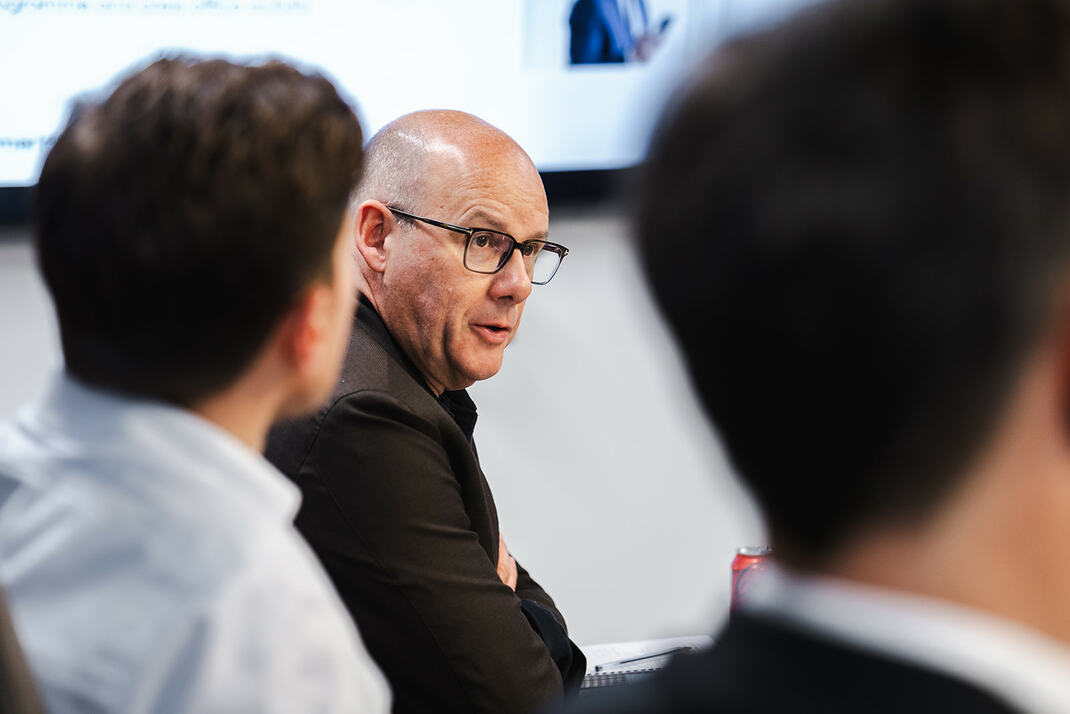Net zero under scrutiny: Why the energy transition still makes sense
Robert Groves, CEO of the SmartestEnergy Group, shares his perspective on the challenges and opportunities shaping the net zero transition. Reflecting on recent disruptions, shifting priorities, and public sentiment, he explains why the case for net zero remains strong, despite growing uncertainty.

My perspective on the net zero transition...
Recent headlines have reignited debate around net zero. From power outages in Spain to changing political priorities and concerns about the pace of progress, the energy transition is under intense scrutiny. From infrastructure and regulation to public perception, the path forward requires bold decisions and a willingness to adapt.
I recently joined Sumit Bose on the Net Hero podcast to share my thoughts on where we stand, what’s at stake and what needs to happen next.
Disruptions are a part of the journey
Incidents like the fire at Heathrow and the blackout in Spain serve as reminders of the vulnerabilities that can emerge during a major transition. While investigations are ongoing, these events highlight the need for a critical shift in how we manage complexity in the energy system.
These disruptions are not signs of failure; they are part of the learning curve. We already have many of the tools and technologies we need; what’s missing is the political leadership and regulatory clarity to set the direction of travel and allow us to move forward with confidence.
The science is clear, the challenge is delivery
Despite the noise, the science behind net zero remains solid. The question isn’t if we transition, it’s how quickly and effectively we can make it happen. We’re witnessing this complexity unfold in real time. Countries like Australia, which are further along in the transition, offer valuable lessons, particularly where infrastructure is still catching up to support this change.
The cost of delay is greater than the cost of change
There’s a common misconception that a renewable future will be a more expensive future, but I disagree. The energy crisis triggered by the war in Ukraine showed just how exposed we are to global market volatility, and consumers paid the price for that exposure.
A renewable-led system offers energy security and, therefore, a more stable and affordable future. Yes, the upfront investment is significant, but the long-term benefits are clear. Lower volatility, greater energy independence, and a more resilient grid are all within reach.
Smarter systems are the key to unlocking value
The benefits of a renewable-powered grid are clear, but to realise them, we need a smarter, more agile system. Infrastructure and innovation must go hand in hand, which means investing in innovative technologies like battery storage and demand-side response and rethinking how we manage intermittency across the grid.
Grid connections and storage are two of the most pressing challenges. Our current grid model, often dominated by monopolies, needs to evolve. We should consider opening the space to private companies to introduce competition and accelerate progress.
On storage, I’m optimistic. Battery costs are falling fast, and their footprint is smaller than many expect. Demand-side response is another proven, low-cost solution that simply needs the right policy support to scale.
Bringing people along is essential
One of the biggest challenges we face is public confidence. With economic pressures mounting, it’s understandable that people are questioning the value of the transition but the current system, marked by high and volatile prices, isn’t sustainable either.
A smarter, cleaner, and more affordable system is possible. With the right mix of technology, policy, and leadership, we can deliver energy that works better for everyone.
SmartestEnergy’s role in the transition
At SmartestEnergy, we’ve been part of this evolving landscape since 2001. We started as a generation aggregator and trader in the UK, and we’ve grown into a vertically integrated global electricity company. What sets us apart is that we don’t own generation assets, instead, we focus on using the market to deliver value.
We’re creating the next generation of technology and data solutions that will make buying and selling renewables straightforward. Our new traceable supply product is a great example of this, allowing business customers to track the origin of their electricity, and demand for this kind of transparency is growing.
Looking ahead with confidence
We’re now expanding internationally, taking our model to the US, Australia, and potentially Japan. Our focus is on agility and supporting the transition wherever we operate.
I remain confident in the net zero journey. The challenges are real, but so are the opportunities. With smart investment, forward-thinking regulation, and a commitment to innovation, we can build a greener, more resilient energy system that works for everyone.

Want to dive deeper? Listen to the full podcast!
Tune into my conversation with Sumit Bose on the Net Hero Podcast, where we explore these themes in more detail and discuss what it will really take to deliver on net zero.


